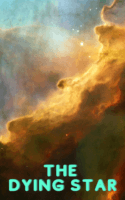The year 2022 is coming to an end in a month, and the festive season always brings a time of reflection. The highs, the lows and the gutters of the year. What we did wrong, what we could change and what we hope to bring into a new year.
It is also a reminder that everything has a beginning, a middle, and an end. Like the years that come and go, so do our stars up in the universe. On the 25th of December 2021, James Webb was launched by the National Aeronautics and Space Administration (NASA). James Webb is a space telescope that was created to explore the more unknown parts of our universe.
James Webb proved to be an overachiever as it quickly exposed the sad fate of The Southern Ring Nebula, a sad fate that some scientists say may be the same for our sun one day.
The discovery of the dying star – The Southern Ring Nebula
The dying star aka The Southern Ring Nebula is a planetary nebula about 2,000 light-years away in the southern hemisphere. Wondering what is a nebula? An article by NASA on their website called Space Place describes a nebula as a giant cloud of dust and gas in space. Some nebulae (more than one nebula) arise from the gas and dust thrown out by the explosion of a dying star.
The nebula was discovered more than 50 years ago, but the launch of James Webb has given scientists a clearer set of eyes to really determine what happened with the dying star.
Elisha Sauers, a Mashable.com scientist, discusses how the fate of this star may be the same of our beloved Sun. “It’s not just any star — it’s a star that is much like the Sun,” agrees Klaus Pontoppidan, an astronomer at the Space Telescope Science Institute in Baltimore – “at least like the Sun will be in 5 billion years when the Sun dies.”
Space: does everything run its course?
Space seems to have a start, a middle, and an ending. Some endings are more glorious than others, take the big bang theory for example. According to NASA, the big bang is the idea that the universe began as just a single point, then expanded and stretched to grow as large as it is right now.
An article by Jamie Carter for Forbes magazine claims that in about 5.5 billion years the Sun will run out of hydrogen and begin expanding as it burns helium. It will swap from being a yellow giant to a red giant, expanding beyond the orbit of Mars and vaporising Earth… and yes that means killing any generations that may have come after.
Is the death of a star the birth of another?
Well yes, that’s how even our planet Earth was created – by the collision of different planets. The magic of space is how the destruction of these amazing objects ends up creating even more spectacular objects. The death of a star, especially one as big as our Sun, would create newer stars and even planets. Because of how light travels, we experience some of these destructions from the past and it enables us to learn more about what will happen with our own universe in the future.
Tell us: What about learning about the stars fascinates you?


